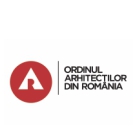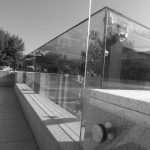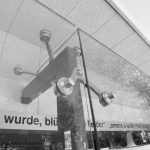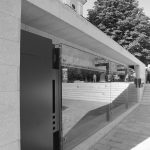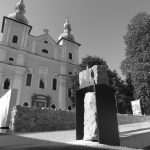
Project: Restoration of Cetății Square, Baia Mare
The project of rehabilitation of the Fortress Square, Baia Mare, will be presented in LAUD Bucharest
The Fortress Square and Stephen’s Tower, two symbols of Baia Mare municipality are two main points of interest for numerous tourists not only from our country but also from abroad.
For the transformation of the Fortress Square in an urban space in a cultural and religious destination, from the desire to make the most of Stephen’s Tower alongside with the existence of Saint Stephen Church, and from the desire to harmonize them with the other ecclesiastical buildings from the area of the City Hall of Baia Mare municipality, we initiated all the neccessary endeavours to include this project among the financed projects by POR Axa 1, NV/1/1.1/PDU/1/7/16.03.2010, Code SMIS 18165. Here, we can find: the unit „Stephen’s Tower” (XIV century); historical monument MM–II–m–A–04436 consisting of: – Stephen’s Tower (XV century) historical monument MM–II–m-A–04436.01 ; Gothic Church Foundations (1347), historical monument MM–II–m-A–04436.02 ; „Holy Trinity” roman-catholic church of the former Jesuit monastery (1717-1719), historical monument MM–II–m–A–04437.01; Degenfeld House (XVI-XVII century), historical monument MM–II–m–B–04450.
Saint Stephen’s Church was dismantled in 1847, from which only the tower was kept. The place of the church was taken by a plantation of selected trees which evolved harmoniously with all the historical monuments from the square, which introduced the it in the public square with secular trees area.
The aim of this project is to reanimate in the memory of the city, the most important eclesiastical edifice – Saint Stephen Church – related to the birth of the village Rivulus Dominarum. After the archeological digs conducted in the Fortress Square, during the rehabilitation works, the shapes and dimensions of the church which were marked in the boarded floor, were reconstructed. The material with a special value that was discovered by the archaeologists will be visible in five points, which will allow the visitors to know more about the structure and the aspect of the building. At the same time, on the western side, the main access area of Saint Stephen Church was unveiled, the northen side of the portal, elements which can be admired. The interior of the Tower was consolidated and preserved, the acces staircase was rehabilitated, the bell and the clock were restored, and the interior spaces will be picture rails for different exhibitions. In the former lapidarium from the base of the tower, the rehabilitation of the altar was proposed, the altar which functioned here in the 20th century.
During the rehabilitation, two other eclesiastical buildings were discovered, building of which we had a minimal knowledge: Saint Ecaterina Chursh and Saint Martin Church, whose presence has been highlighted.
The rehabilitation project, had in mind two aspects; firstly, the preservation, consolidation and restoration of an heritage object and implicitly its implementation, and the second aspect was the achievement of a new museum space of an European attire, with multiple information related to the history of the medieval fortress Rivulus Dominarum. In this aspect, it was necessary to have a reception and an information point for tourists, located next to Stephen’s Tower.



